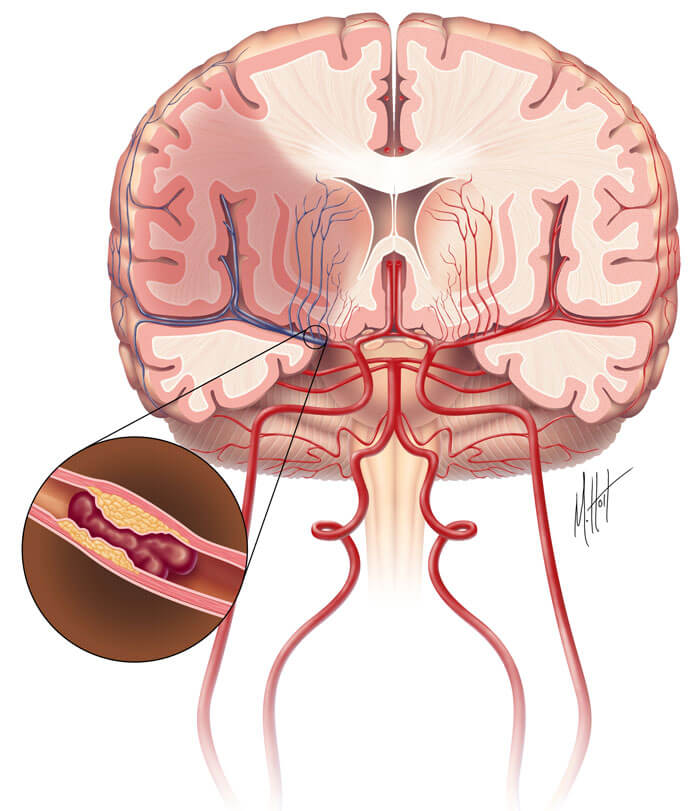Stroke (cerebrovascular accident) is classified as both a neurological and a cardiovascular disease, as it is a disruption in blood supply to the brain which causes the neurological abnormalities. There are three types of stroke: ischaemic (thrombotic and embolic), haemorrhagic (including intracerebral and subarachnoid), and transient ischaemic attacks (TIA, or ‘mini stroke’).
Ischaemic strokes occur when an artery supplying the brain is blocked. They account for nearly 90% of all strokes. Thrombotic ischaemic strokes occur when a clot develops in an artery of the brain at the site of the blockage. Embolic ischaemic strokes occur when a clot travels throughout the body and lodges itself in an artery of the brain that is too narrow to pass through.
Risk factors for stroke include high blood pressure, diabetes, heart disease (e.g. atrial fibrillation, heart failure, valvular disease, or recent heart attack), smoking, obesity, elevated blood lipids (cholesterol & triglycerides), sedentary lifestyle, excessive alcohol, age (>60 years), gender (males > females), and heredity.
The effects of a stroke depend on which part of the brain is injured, and how severely the brain is injured. Strokes may cause temporary or permanent muscle weakness, loss of sensation, or difficulty with speaking, seeing, or walking. It is important to remember that there is nothing wrong with the affected muscles – the injury is in the brain which coordinates the messages to the muscles. Thankfully, the brain is ‘plastic’, meaning the brain continually reorganises itself. As such, it is possible to make improvements in physical function through exercise and the repetition of movement.
Early rehabilitation from a stroke will include input from a range of allied health practitioners such as speech pathologists, physiotherapists and occupational therapists. Intervention is largely aimed at restoring essential fine and gross motor skills, prescribing mobility aids (e.g. stick, frame, ankle-foot orthoses (AFO), or brace), and making changes to the home environment. An exercise physiologist typically comes into the scene when a more comprehensive, full body exercise program needs to be developed. Exercise physiologists can assist with:
- prescribing walking aids
- weight loss
- gait retraining
- improving balance
- correcting functional movement patterns
- increasing strength and cardiorespiratory fitness
- reducing the likelihood of another stroke
A healthy diet combined with regular exercise is the most effective intervention for reducing the risk of having a stroke or any other cardiovascular event. Time and time again, this combination has demonstrated a positive impact on blood pressure, glycaemic control, blood lipids, body weight, anxiety and depression, sleep, memory, bone density and pain levels.
Exercise is a choice, so choose wisely… Use it. Or lose it.




